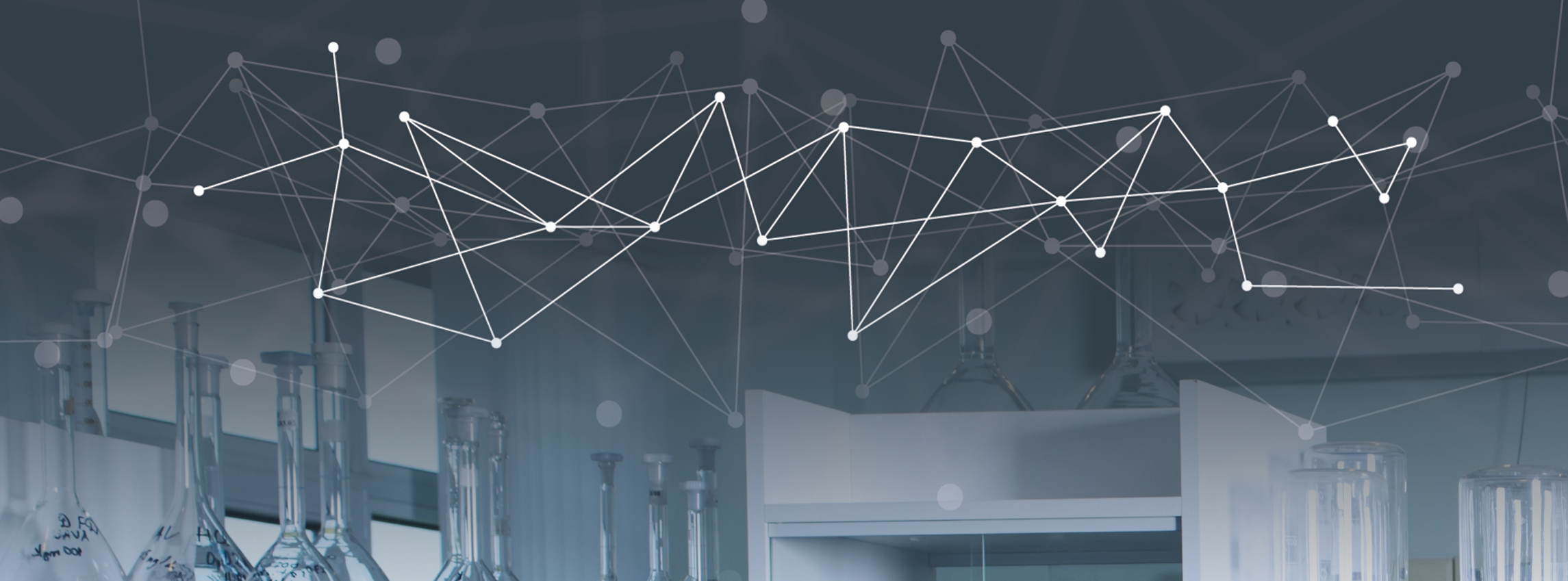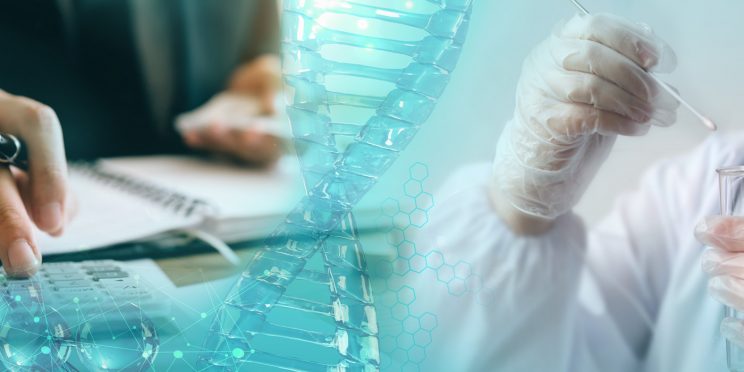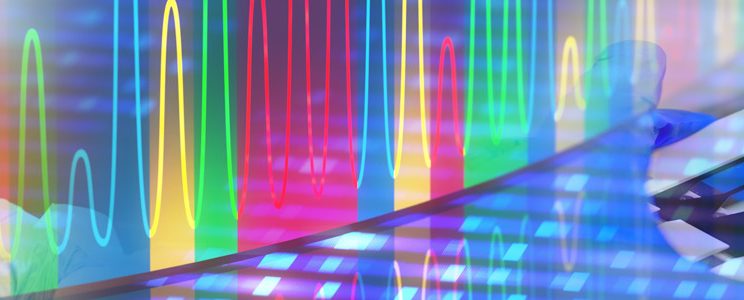Supporting NIJ's Mission to Improve Knowledge and Understanding
The National Institute of Justice (NIJ), in partnership with the Forensic Technology Center of Excellence (FTCOE) at RTI International, formed the Forensic Laboratory Needs Technology Working Group (FLN-TWG). The FLN-TWG supports NIJ’s mission to improve knowledge and understanding of the forensic technology needs of federal, state, local, and tribal forensic practitioners and crime laboratories.
The FLN-TWG has provided objective and independent knowledge, data, information, and expertise to inform NIJ’s decision-making process on the research, development, and operational needs of federal, state, local, and tribal practitioners regarding forensic technology. The FLN-TWG will: (1) identify forensic technology research needs; (2) provide input to NIJ about its forensic technology research agenda; (3) identify the need for new and improved technologies and practices; (4) disseminate information about promising forensic research, technologies, and practices to the field; and (5) help advance the implementation of relevant research, practices, and technologies. The FLN-TWG is comprised of state and local forensic practitioners and researchers.
Beginning in 2021, the FLN-TWG placed emphasis on four subcommittees: LIMS, Technology Needs, Research Activities, and Evolving Approaches and Technologies for Seized Drug Analysis.
- LIMS
- This group works to improve the LIMS environment across the nation’s crime laboratories. Their focus areas include developing a set of core functional requirements that should be available in current LIMS. The group also defines functionalities that should be included into a next generation LIMS.
- Technology Needs
- This group works to identify the technology needs of the forensic science practitioner to facilitate adoption of standards. They focus on the importance of consensus-based standards in forensic science and work to identify technology and/or knowledge transfer barriers that impede implementation or adoption of standards. The group is preparing a “heat map” which identifies each published standard and relative challenges to implementations by crime laboratories.
- Research Activities
- This group works to increase research activities in the forensic laboratories and other justice settings to aid in the adoption of new technologies. Their focus includes identifying ways to improve forensic community understanding, collaboration, and partnership to ultimately drive technology transition and implementation.
- Evolving Approaches and Technologies for Seized Drug Analysis
- This group works to identify the range of alternate and underutilized novel technologies for seized drugs analysis. Their focus includes preparing technical documents compiled of implementation needs including installation needs, user training, and the availability of validated methods and searchable libraries for the identified technologies.
Working Group Participants
| Jose Almirall | Lesley Hammer | Marcela Najarro* |
| Kevin Ardoin | Brian Hoey | Jeannette Perr* |
| Armando Avallone* | Linda Jackson | Timothy Rohrig |
| Hal (Les) Barnett | Tracy Johnson* | Frances Scott* |
| Michael Black* | John Paul Jones* | David Sheppard* |
| Amber Burns* | Christopher Kelly | Edward Sisco* |
| Tom Busey | Sarah Kerrigan | Paul Speaker |
| Tyler (Jay) Davidson (Chair)* | John Knell* | Stephanie Stoiloff |
| Matthew Gamette | Timothy Kupferschmid (Chair) | Peter Stout |
| Michael Garvey | Troy Lawrence | Benjamin Swanholm* |
| Gretchen Greene* | Jennifer Love* | Kristina Takeshita |
| Catherine Grgicak | Ira Lurie* | Sarah Seashols Williams (Chair) |
| Wesley Grose | Henry Maynard* | Jody Wolf |
| Adam Hall* | Brady Mills | Britney Wylie* |
|
*Designates Auxiliary Member |
||
Publications
Laboratory Information Management Systems in Forensic Science Service Provider Laboratories: Current State and Next Generation
Laboratory Information Management Systems in Forensic Science Service Provider Laboratories: Current State and Next Generation
This document provides FSSP decision-makers with an overview of functionalities that a LIMS should include. An excel download is provided with a more comprehensive list of functional requirements to assist with discovering and enumerating functional requirements, both when developing purchasing requirements and creating documents after procuring a new LIMS. Furthermore, this list could be useful to LIMS developers to assess and possibly incorporate the features discussed here into their products. In addition to compiling a list of functional requirements for a modern LIMS, the authors have forecasted what functional requirements may be necessary for a next generation LIMS.
Evolving Approaches and Technologies for Seized Drug Analysis
Evolving Approaches and Technologies for Seized Drug Analysis
This white paper highlights evolving approaches and technologies that address the current challenges facing seized drug laboratories. It was created to inform forensic laboratory leaders and those involved in procurement of analytical instrumentation.
Direct Analysis in Real Time Mass Spectrometry (DART-MS)
Direct Analysis in Real Time Mass Spectrometry (DART-MS)
This technical note details the utility of direct analysis in real time mass spectrometry (DART-MS) as a technique to rapidly screen seized drug evidence.
Gas Chromatography Vapor-Phase Infrared Spectroscopy (GC-VIR)
Gas Chromatography Vapor-Phase Infrared Spectroscopy (GC-VIR)
This technical note details the utility of Gas Chromatography Vapor-Phase Infrared Spectroscopy as a supplemental or alternative technique to the traditional methods, gas chromatography-mass spectrometry (GC-MS) and infrared spectroscopy (IR), to analyze seized drugs.
Gas Chromatography-Vacuum Ultraviolet Spectroscopy (GC-VUV)
Gas Chromatography-Vacuum Ultraviolet Spectroscopy (GC-VUV)
This technical note details the utility of gas chromatography–vacuum ultraviolet spectroscopy (GC-VUV) as a method of seized drug analysis.
Ultra-High Performance Liquid Chromatography Photo Diode Array Ultraviolet Single Quadrupole Mass Spectrometry
Ultra-High Performance Liquid Chromatography Photo Diode Array Ultraviolet Single Quadrupole Mass Spectrometry (UHPLC-PDA UV-MS)
This technical note details the utility of ultra-high performance liquid chromatography (UHPLC) coupled with photo diode array ultraviolet spectroscopy (PDA UV) detection and single quadrupole mass spectrometry (MS) detection in series as a complementary technique to gas chromatography-electron ionization-mass spectrometry (GC-EI-MS) in seized drug analysis.
Microcrystal Tests
Microcrystal Tests
This technical note details the utility of microcrystal tests, an effective alternative technique to instrumental analysis, to analyze seized drugs.
Analysis of Marijuana and Marijuana Products
Analysis of Marijuana and Marijuana Products
This technical note summarizes a variety of sample preparation types and instrumental methods that can be used to identify marijuana and marijuana products.
A Roadmap to Improve Research and Technology Transition in Forensic Science
A Roadmap to Improve Research and Technology Transition in Forensic Science
This roadmap is intended to articulate actions for forensic community members to improve the transition of research and technology into adoption by FSSPs; highlight research partnership opportunities to improve alignment between researchers and FSSPs to help advance knowledge, simplify FSSP workflows, create functional products, and improve justice; improve the process of research, development, testing and evaluation, validation, and adoption of technologies into the forensic community; enhance collaboration around shared goals that solve problems while saving time and resources; improve awareness of forensic community perspectives and emphasize a shared lexicon; and drive understanding of realities and opportunities for forensic community research.
Implementation Strategies: LC-MS-Based Forensic Toxicology Screening
Implementation Strategies: LC-MS-Based Forensic Toxicology Screening
This paper provides guidance for the implementation and utilization of liquid chromatography-mass spectrometry (LC-MS)–based toxicological screening as a more advanced alternative to traditional immunoassay. LC-MS gives a multi-targeted, highly selective and sensitive screening capability compared with the screening of limited drug classes or target analytes offered by traditional immunoassay. Various LC-MS approaches have been used as an alternative, including LC-MS/MS (liquid chromatography-tandem mass spectrometry), LC-TOF-MS (liquid chromatography-time of flight mass spectrometry), and LC-QTOF-MS (liquid chromatography-quadrupole time of flight mass spectrometry).
Implementation Strategies: Proteomic Mass Spectrometry for Biology Fluid Identification
Implementation Strategies: Proteomic Mass Spectrometry for Biology Fluid Identification
The proteomic mass spectrometry (MS) body fluid assay described herein is undergoing validation at the New York City Office of Chief Medical Examiner (NYC OCME). It is designed to detect multiple blood, saliva, and semen marker peptides using high performance liquid chromatography (HPLC) followed by multiple reaction monitoring (MRM) MS (employing an AB SCIEX Eksigent HPLC and 6500 QTRAP mass spectrometer respectively). The assay is unbiased, meaning no a priori knowledge of a sample is necessary before testing, because each sample is tested for all marker proteins. The assay is designed for high-throughput sample processing (~72 samples/day). On a volume basis, detection of each body fluid is in the nanoliter range (for both neat and mock forensic samples). According to Yang et al., sensitivity is at least 10 times greater than other presumptive or confirmatory methods, including chemical, immunochemical, enzymatic, and messenger RNA (mRNA) profiling.
Implementation Strategies: Next Generation Sequencing for DNA Analysis
Implementation Strategies: Next Generation Sequencing for DNA Analysis
Modern sequencing technology offers several enhancements over traditional DNA analysis methods: parallel analysis of multiple marker types; improved performance with degraded DNA; increased discrimination power and mixture resolution capability through Short Tandem Repeats (STR) sequence variant detection; capability to infer phenotype, ancestry, genealogy, or parentage; and other applications. The massive sequence output of next generation sequencing (NGS) instruments may be divided among many samples for routine testing (i.e., databasing) or focused to analyze a small number of challenging evidence samples for comprehensively analyzing many marker types. Two platforms have kits that have received acceptance for use in National DNA Index System (NDIS) submissions and thus dominate the forensic DNA landscape: the Ion Torrent S5 (Thermo Fisher Scientific) and the MiSeq FGx (Verogen, Inc.). Capital equipment acquisition cost is approximately $150,000 with annual maintenance agreement costs of approximately $15,000. Increased complexity, reagent costs, and labor input may limit NGS use to challenging cases where augmentation of current STR typing methods is needed. Higher throughput usage may necessitate automation of sample preparation and add requirements for large-scale data storage infrastructure.
Implementation Strategies: 3D Imaging for Firearms and Toolmarks
Implementation Strategies: 3D Imaging for Firearms and Toolmarks
Forensic laboratories have relied on light microscopy for a multitude of disciplines since the inception of forensic science, including questioned documents, trace evidence, and firearm and toolmark examination. Within the discipline of firearm and toolmark examination, light microscopy has been the traditional means for conducting physical comparisons of microscopic marks on ammunition components and toolmarked surfaces. In the past decade, the application of three-dimensional (3D) imaging methods capable of measuring the x, y, and z coordinates of microscopic features within a toolmark has allowed the development of high-resolution digital images and measurement of the surface topographies of those microscopic features. The advancement in instrumentation used for virtual comparison microscopy allows examiners to view accurate representations of toolmarked surfaces and to collect and measure topographic data from the evidence, facilitating comparisons that are more objective compared with conventional light microscopy comparison methods. This technology enables virtual technical reviews without the physical transfer of evidence. These tools show promise to revolutionize the field of forensic firearms examination and to address the need for more automated, quantitative methods for pattern evidence comparison, as expressed by the National Academies of Science (NAS) and President's Council of Advisors on Science Technology (PCAST) reports. This paper summarizes the current state of 3D imaging technology used in firearm and toolmark forensic analysis and offers guidance to laboratory managers considering adopting this technology. The appendix includes a vendor table listing available instrumentation at the time this document was published.
Implementation Strategies: Updating Data Collection for Digital Evidence Casework in Project FORESIGHT
Implementation Strategies: Updating Data Collection for Digital Evidence Casework in Project FORESIGHT
Project FORESIGHT is a business-guided self-evaluation of forensic science laboratories across the globe. The participating laboratories represent metropolitan, regional, state, and national agencies. Faculty from the West Virginia University John Chambers College of Business and Economics analyze data from forensic crime laboratories around the world to identify trends across laboratories and analyze individual laboratory performance. The project uses standardized definitions for a laboratory’s functional areas and produces annual metrics to evaluate work processes, linking data on casework, personnel allocation, and financial information to work tasks and functions. Laboratory managers can then assess resource allocations, efficiencies, and value of services, with the goal of measuring a laboratory’s operational data to identify and preserve what works and to change what does not.
Funding for these Forensic Technology Center of Excellence reports was provided by the National Institute of Justice, Office of Justice Programs, U.S. Department of Justice.
The opinions, findings, and conclusions or recommendations expressed in these reports are those of the author(s) and do not necessarily reflect those of the U.S. Department of Justice.
Contact us at ForensicCOE@rti.org with any questions and subscribe to our newsletter for notifications.




